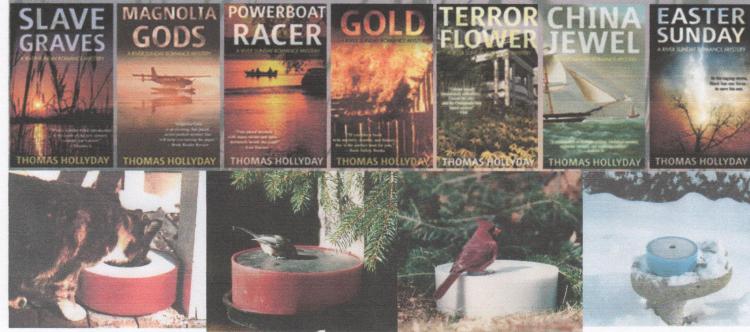“FALL LEAF PEEPING HOW TO” newengland.com #PET http://www.amazon.com/Solar-Sipper/b/ref=bl_dp_s_web_10790805011?ie=UTF8&node=10790805011&field-lbr_brands_browse-bin=Solar+Sipper #BOOK https://www.amazon.com/s/ref=nb_sb_ss_i_5_11/156-5130182-9036153?url=search-alias%3Dstripbooks&field-keywords=thomas+hollyday+books&sprefix=thomas+holl%2Cstripbooks%2C
Category Archives: wildflowers
monarch butterflies
“Monarch butterflies” naturework.com AD http://www.amazon.com/Solar-Sipper/b/ref=bl_dp_s_web_10790805011?ie=UTF8&node=10790805011&field-lbr_brands_browse-bin=Solar+Sipper AD https://www.amazon.com/s/ref=nb_sb_ss_i_5_11/156-5130182-9036153?url=search-alias%3Dstripbooks&field-keywords=thomas+hollyday+books&sprefix=thomas+holl%2Cstripbooks%2C

nemontics
“Neonics pesticide danger to bees” http://www.seeker.com see also http://www.amazon.com/Solar-Sipper/b/ref=bl_dp_s_web_10790805011?ie=UTF8&node=10790805011&field-lbr_brands_browse-bin=Solar+Sipper https://www.amazon.com/s/ref=nb_sb_ss_i_5_11/156-5130182-9036153?url=search-alias%3Dstripbooks&field-keywords=thomas+hollyday+books&sprefix=thomas+holl%2Cstripbooks%2C137
The Sixth extinction can we prevent it
Prevent 6th world mass extinction msn.com/en-us/news/technology see also http://www.amazon.com/Solar-Sipper/b/ref=bl_dp_s_web_10790805011?ie=UTF8&node=10790805011&field-lbr_brands_browse-bin=Solar+Sipper https://www.amazon.com/s/ref=nb_sb_ss_i_5_11/156-5130182-9036153?url=search-alias%3Dstripbooks&field-keywords=thomas+hollyday+books&sprefix=thomas+holl%2Cstripbooks%2C137
Mother nature speaks
“Mother nature is speaking to us” 2015 annual report from conservation.org see also http://www.amazon.com/Solar-Sipper/b/ref=bl_dp_s_web_10790805011?ie=UTF8&node=10790805011&field-lbr_brands_browse-bin=Solar+Sipper
wildflowers
Often when I look at wildflowers growing in the wetlands at the Club I try to imagine whet they would say to me if they could talk.
I suspect that the first words to come from their petals would be “Don’t pick me” Following that, they might say, “Leave my home alone.”
We can learn a lot by observing our wildflowers.Perhaps some of you dear readers don’t know what is meant by the term wildflower.
Actually it is a good question. It’s a flowering plant that grows wild without any cultivation. The beautiful plants we see with such magnificent blossoms in our backyards are cultivated versions of the wildflowers they came from. Some of them are hybrids developed over centuries of work by gardeners looking for special colors or stronger blooms.
The problem is that some of our native wildflowers are becoming endangered or have disappeared forever. One serious issue when we speak of wildflowers is whether they are native or alien. Alien wildflowers are brought to our country from other environments and often destroy local native plants. Remember the comment that a flower might have made to us if it could talk. “Leave my home alone.” Well, many native wildflowers are endangered because human habitation has taken away their home or, as we call it, habitat.
Here’s some picks of endangered native wildflowers in your Club area you can help to save. Research them in USDA Plants, Lady Bird Johnson Wildflower Center, and Audubon Field Guide.
White topped aster (aster curtus)
You military veterans will like the close cropped hairdo of this Northwestern wildflower. It certainly reminds me of the Army hairdo of one of the sergeants I fought with in Vietnam in the old days. The white topped aster is visible by April and flowers in July and August. You’ll spot it in lowland grasslands from Eugene, Oregon to Vancouver Island. It grows in small clumps near Goldenrod and seems to survive best near sheltering shrubs.
Scarlet Indian Paintbrush (castilleja coccinea)
Clubs located in the middle of America will probably know this fascinating plant. Its name comes from its resemblance to a brush dipped in paint. One of the Native American legends about this plant is the story of a young brave who tried to paint the sunset with his war paint. When he could not he asked for guidance from the Great Spirit who gave him paintbrushes with the colors. When he finished his painting he left the brushes in fields where he had worked. Indian paintbrush plants are the result. The more western version is much redder than the eastern version. The Native Americans had a variety of use for the flowers, from curing colds to providing a love potion. Look out, guys and gals.
Sweetbush ( calycanthus floridus)
This is a plant for you Southerners. Jean Grunert in Love to Know Garden writes that this plant is known by many names including strawberry bush, Carolina allspice and bubby blossom. This latter name is the most colorful as it refers to the wonderful aroma of the blossoms. Apparently women in the days before frequent baths and deodorant would take the flowers and place them in their bodice, referring to the flowers as “bubby blossoms.” Watch out though. This plant is not to be confused with allspice and it is poisonous. Cherokees used it as a poison to keep away wolves. That is probably why it is endangered and cut back where farm animals are raised.
The blossoms appear in spring and fill the air with fragrance. It’s long been one of those plants preserved by families as a keepsake. The Cherokee medicinal herb list gives us some of its ancient uses. Most interesting were its cultivations for use on hives and eye drops.